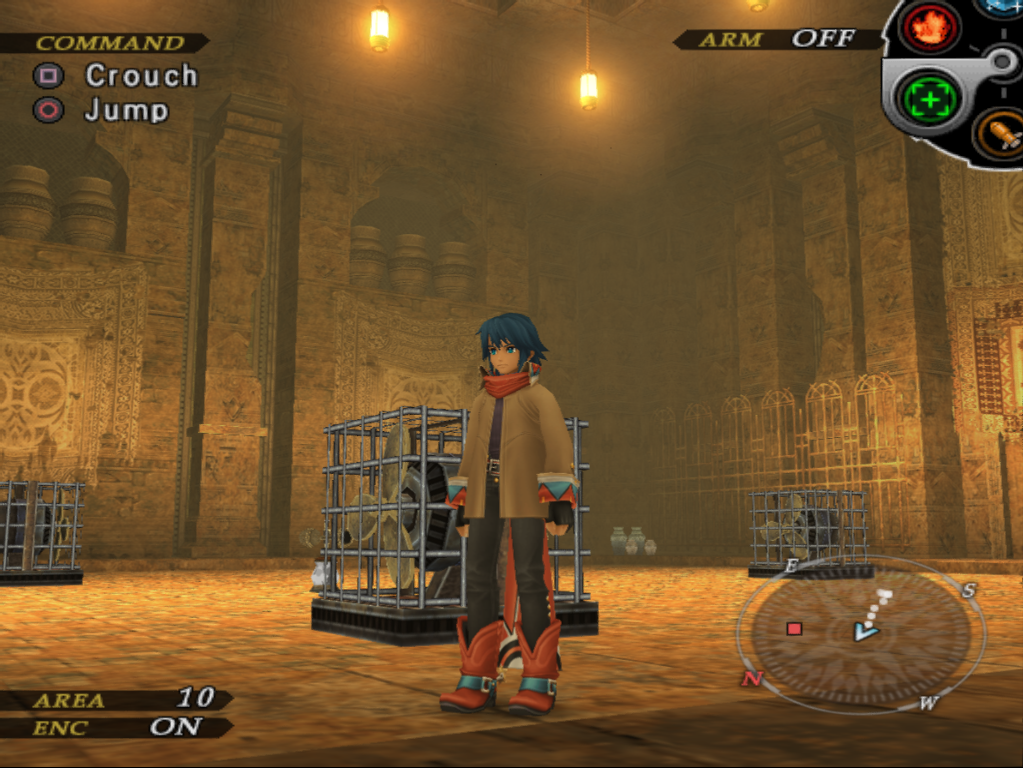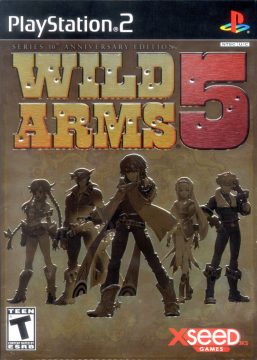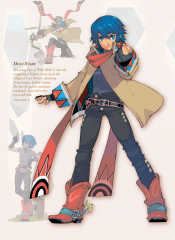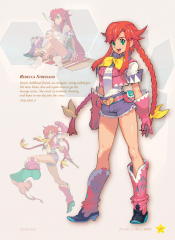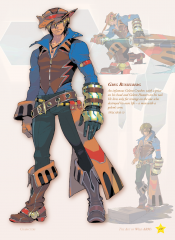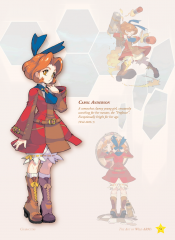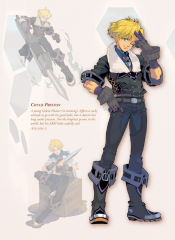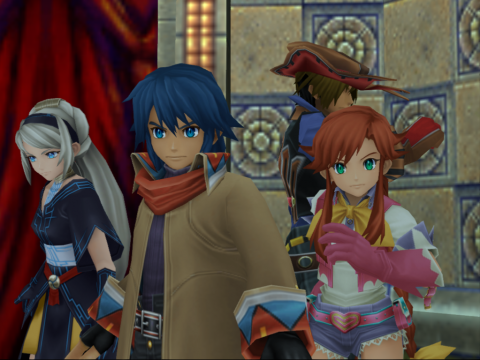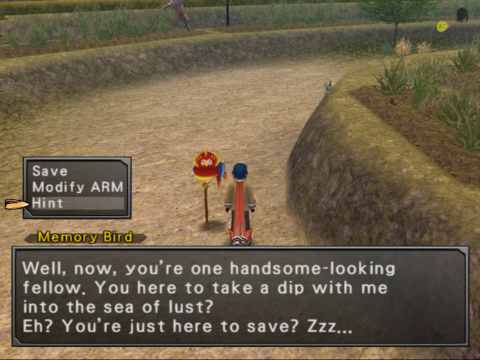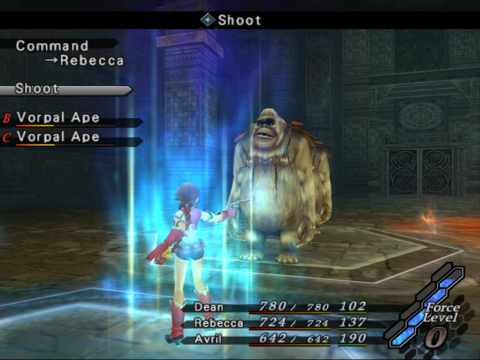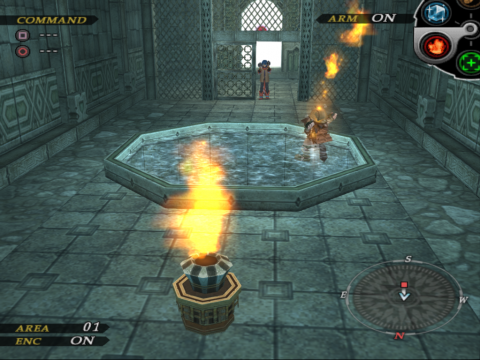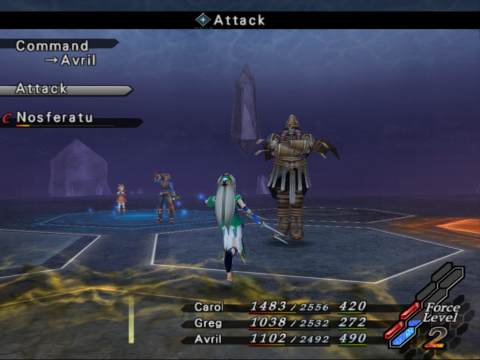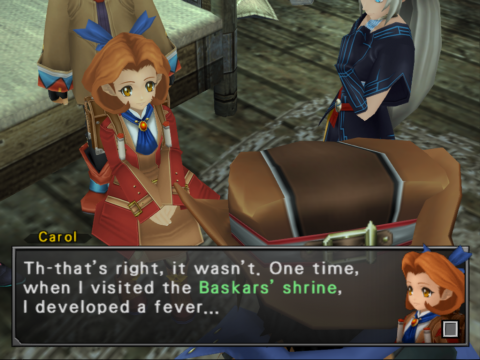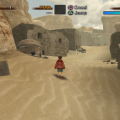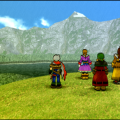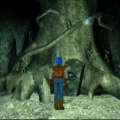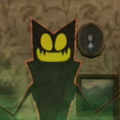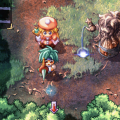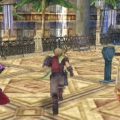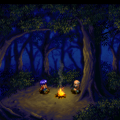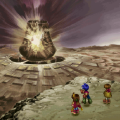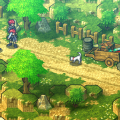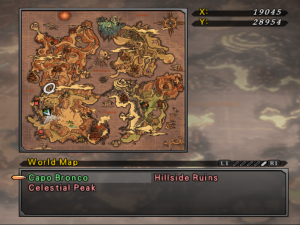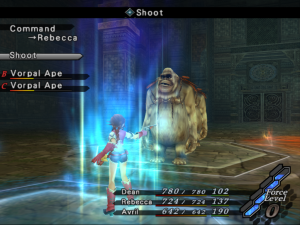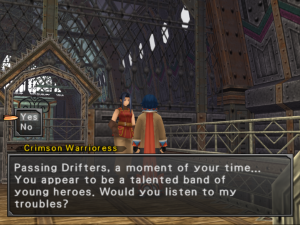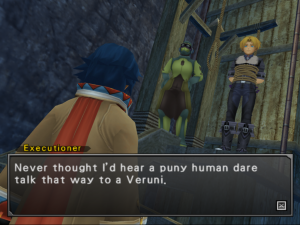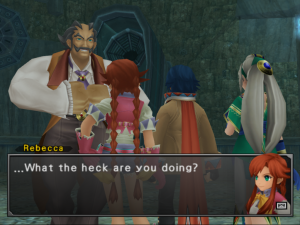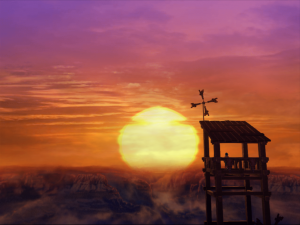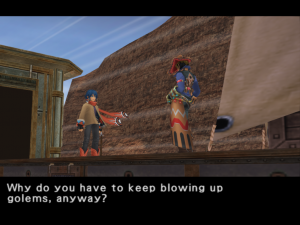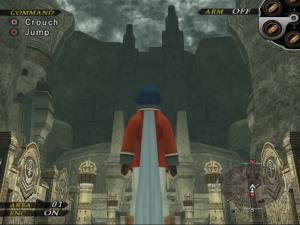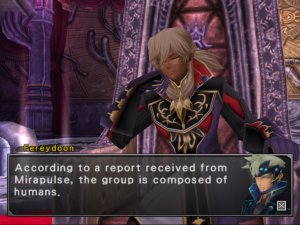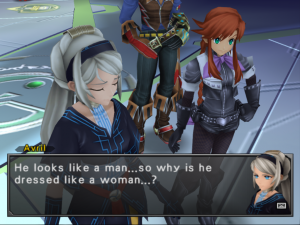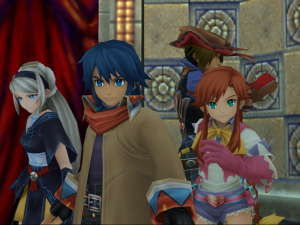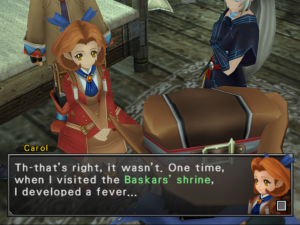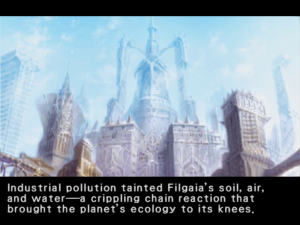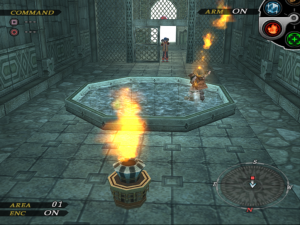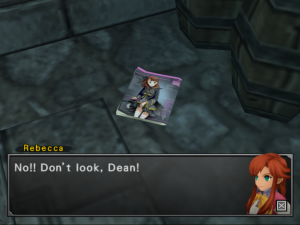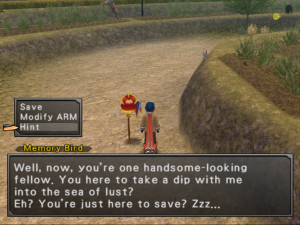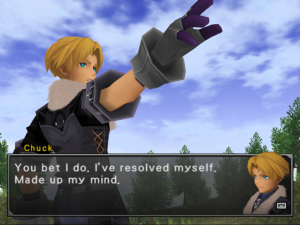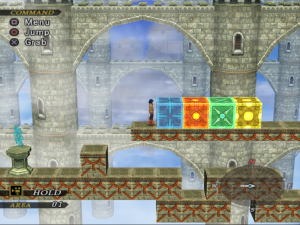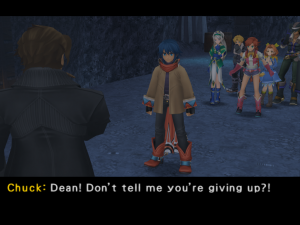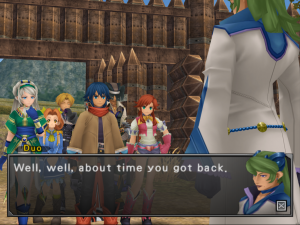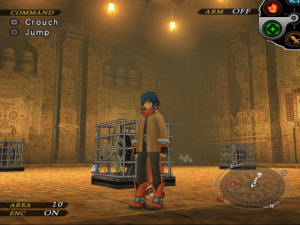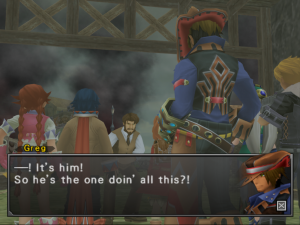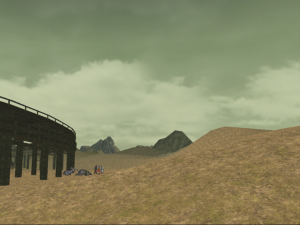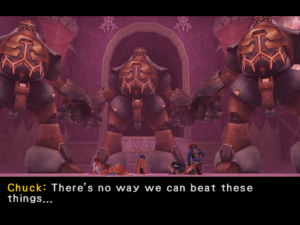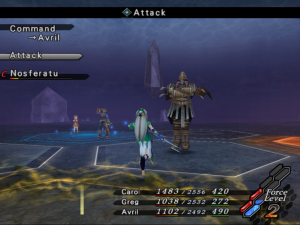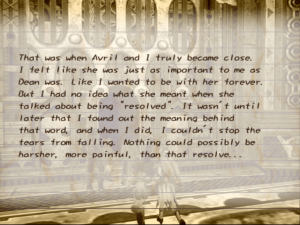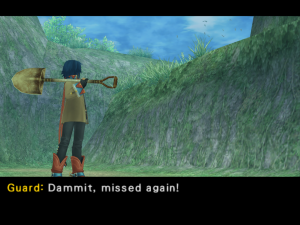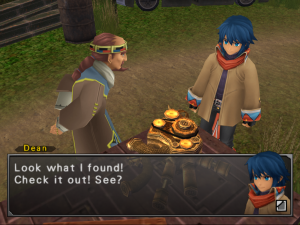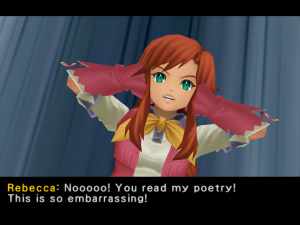Wild Arms 5 is a streamlined culmination of all the series has to offer. Released on the ten-year anniversary of the original Wild Arms, it pays homage to the core of what made the series remarkable as it introduces new and sometimes improved mechanics. Though mostly a continuation of the style of gameplay established in the fourth game, it reintroduces signature features of the old series in altered form. It also has a lot of cameos and references to its predecessors.
Wild Arms 5 is not the greatest of the series, but it’s much better than one might expect from a late-stage PS2 JRPG in a petering out series. It has strengths that many of the earlier games lacked, but its narrative is kind of wonky, the flow of progress in the game is uneven, and the gameplay is at times overly simple. Combat is more balanced than Wild Arms 4 though, and exploration is more entertaining and rewarding. It shows that even in the twilight of its strength as a franchise it still held surprises for players. It’s by no means a whimper of a way to indefinitely conclude the main series.
Dean Stark and Rebecca Streisand are two kids living in a remote village in the mountains of Filgaia. The planet is semi-arid, most paralleling the mixture of fantasy and desert of the original game’s setting, with some more futuristic elements added in.One day, a girl falls out of the sky in the clutches of a detached golem arm. Her name is Avril, and she remembers nothing about how she came to get into this position except for two words: Johnny Appleseed. Dean and Rebecca decide to help Avril by traveling the world together in search of whoever or whatever “Johnny Appleseed” is.
Characters
Dean Stark dreams of becoming a Golem Hunter, someone who excavates the remains of the ancient machine beings that have been in the series since the original.
Rebecca Streisand is a gunslinger who specializes in “acrobatic shooting” and who punctuates the game’s narrative with awkward diary entries.
Greg Russellberg, a “Golem Crusher”, the opposite of a Golem Hunter, whose mission it is to destroy all golems.
Carol Anderson, an extremely intelligent little girl with an unfortunately obnoxious voice who is in search of the man she assists, identified only as The Professor.
Chuck Preston, a Golem Hunter who we first find in a town about to be executed for allegedly stealing an artifact, until Dean and the party clear his name.
Now, most Wild Arms games have a clear sense of danger, run-ins with the antagonists happening quickly in the narrative and driving the protagonists from objective to objective. Wild Arms 2 is the exception, but even that game gets there more quickly than this. Wild Arms 5 just takes forever for the heroes and the villains to actually meet and clash. For the majority of the game, you’ll find yourself running from place to place seeking out hints about Johnny Appleseed, only for any lead to turn out to be a red herring. The mystery doesn’t build, it moves in starts and stops. It feels like even the writers stop caring about the mystery of Johnny Appleseed after a certain point, distracted by bits of world-building that don’t have anything to do with this central question. Then, in the final third or so of the game, the entire plot and central conflict suddenly reveals itself, and jarringly tries to bring together all the tangents the players have gone on throughout the game.
There’s a lot of interesting world-building in the meantime at least. The biggest conflict in Filgaia isn’t, like usual, ecological devastation (at first), but racism. There’s a humanoid species called the Veruni who rule over Filgaia now, who treat humans as second-class citizens. Much of the game is spent dealing with Human-Veruni relations. It isn’t the most inspired premise, but it is something of a change of pace for a Wild Arms game. Thematically, the game has some dark twists that, like the fourth game, the writing itself seems reticent to admit. There’s such a strong sheen of naive optimism, especially in Dean’s personality, that it disguises much of the more insidious elements of the story. This is a thread that will continue on in Wild Arms XF.
Players unhappy with the anime excesses of Wild Arms 4 will be pleased to learn that much of the ridiculous feats of strength and giant guns and bombast are reduced here. Not completely though. Anime tropes definitely come out in different ways. Rebecca and Avril’s love triangle with Dean, for example, can be grating. The worst bit of excess though probably comes from a section where the team is falling off elevated train tracks and they cushion their impact by throwing a grenade on the ground, the force of which seems to lessen the force of hitting the ground. The developers, suffice it to say, get an F in physics.
The improvement in graphics between 4 and 5 is sort of a microcosm of the changes between games as a whole: Small adjustments that make it look and run more smoothly. The character models are crisp and expressive, which is good because anime portraits are gone now completely, even in the menu. This erases the visual novel lite style of cutscenes of the fourth game, but allows for the characters to feel more kinetic and lively. The lack of portraits might have to do with each character having secondary outfits for certain equipment, each a reference to an old Wild Arms character, that changes their appearance on the field, in battle, and in cutscenes.
The setting, as mentioned, is probably most on par with the original game. A little more arid, but varied with forests, snowscapes, ruins, caves, rural villages, and a technological city. As always there are a few names that those familiar with earlier games might recognize, like Mt. Chug-Chug. Generally, the color palette and textures of each area are varied enough to be interesting, even beautiful at times, but just a little too samey after a while. Dungeons especially.
The HEX system and combat balance is much better than the fourth game. Moving between hexes no longer takes a full turn. The hexes are also no longer strictly in a hexagonal formation, but can be placed in all sorts of different combinations, which gives more strategy to combat positioning. There are also new force abilities, like one that can change the elemental hexes (or ley points).
Personal skills and mediums return as a packaged deal. Any character can equip any medium they like, six in all. You also get “Blank Mediums” which you can permanently alter into any of the six main mediums, allowing several characters to use the same techniques and spells. This is especially useful if you want to spam healing spells in tricky boss battles or exploit an elemental weakness by having every character use Blast. Growth and customization points work like WA4, with GCP in reserve offering bonuses to the character’s stats, although its much more balanced and noticeable this time.
Unfortunately, each medium doesn’t come with a whole lot of options. You’ll go through most of the game with only a handful of spells on each character and only a couple of force abilities. Combo abilities also return, and you’ll probably spend a lot of time in regular battles exploiting them, as you tend to gain force power quickly and there’s no penalty for spamming them. Combat is undeniably better than the fourth game, but it feels less dynamic than it should be. There are trick bosses on occasion, or ones that simply spike the difficulty enormously, but once you get a feel for the flow of combat, not much changes. You can swap out party members if you’re on an exterior hex, which is a nice touch given that we’re back to three active party members instead of four. Experience bonuses are still a feature, but aside from the EXP doubling Lucky Card they’re hidden this time around. Possibly a means to stop players from exploiting it, because it certainly was easy to in earlier games.
At a point in the game, you’ll gain control of a golem to fight in combat too. This is completely automated and kind of pointless. If you fight with the golem, you get Gella but no experience.
Instead of a vast world map like 1/ACF or a linear grid like 4, Wild Arms 5 reduces the scope of Filgaia to a series of small interconnected continents at scale. The size of towns are reduced a little bit for consistency (for instance the big metropolis Laila Belle is contained within a glass dome that you can walk around), but in general it’s all to scale. The search function returns in limited form, the way it was meant to be like in ACF, as a way to locate hidden items and side quests. JRPGs at this point in time were moving away from enormous world maps and streamlining their exploration. WA4 was arguably too streamlined, but this gives just the right amount of exploration without making the game lag any more than it already does.
Tools have been discarded and replaced by special bullets, which do the exact same thing. Freeze bullets, fire bullets, search-for-treasure bullets, explosive bullets, etc. These and some light platforming are what will take up all your time in dungeons. Puzzles are much simpler than they used to be, but not oversimple. There are occasional headscratchers, or at least ones that require a bit of forethought before completing.
Random encounters work like they did in WA4: Random until you find a pedestal and get the option to fight a battle to turn encounters on and off. The only difference here is that the battles are specifically with creatures called Sol Nigers, who look quite odd and pack a ton of HP. They aren’t too difficult usually, and your HP and MP recover completely once you successfully defeat them. One kind of misses the encounter gauge, but it’s not the worst system out there. Encounters aren’t too frequent at least, though combat itself takes longer than it should because of the hex system.
The dungeons in themselves aren’t a problem, it’s how they’re encountered in the game. As mentioned the momentum takes a long time to get going, and making this worse is the fact that WA5 has a lot of content that feels like filler. There’s a section toward the end of the game, for instance, that literally requires you to walk down the same windy path three times in a row, and then has you do the same thing with another windy path a few minutes later. The final quarter of the game also has you climbing four towers to get an item at the top of each. While the puzzles in the towers vary and make sense from a narrative standpoint (each tower is guarded by an antagonist who serves as a foil to a protagonist, wrapping up their respective character arcs), they look and feel the exact same, and each takes a long time to get through. Hitting a wall like this in a game that already takes so long to gain momentum can really kill the enthusiasm for the player.
The sidequests are handled better than the fourth game. Most are accessed by cameos from previous series’ characters. Anastasia from WA2, for example, has a donation quest similar to the repair of Adlehyde in the first game, and Jet from WA3 and Yulie from WA4 have small fetch quests. There are plenty of secret bosses, the Abyss, collectible items, and a variation on Millennium Puzzles that takes a side-scrolling falling box approach. Most of these are packed into the end of the game, but not too far in that it feels like it’s killing momentum (as mentioned the main quest does that enough). A few of them have their beginnings early enough that they feel like a continuous thread throughout the game, giving rewards for effort that make the game easier, which is a nice feeling for a side quest to have.
This is the first and only main series game to not have a soundtrack composed by Michiko Naruke. Her influence is, of course, still apparent, yet it stands out in its own right. Masato Kouda, who is known for his work in the Devil May Cry series and Monster Hunter series soundtracks, returns from the fourth game to contribute songs alongside Noriyasu Agematsu, a new composer to the series primarily known for anime and mobile game soundtracks.
In celebration of Wild Arms‘ ten year anniversary, the first US print run came in a commemorative box that includes an eighty-page art book. The book, called The Art of Wild Arms, is a great little token for fans, with a few colored illustrations from every game in the series and a set of character sheets for every protagonist. It’s remarkable to take a look at how the art direction of the series fluctuates while maintaining the Wild West aesthetic.
Wild Arms 5 feels like a solid conclusion to the series, at least indefinitely. XF will be released a little later, but that game, while not without its merits, doesn’t feel like a true mainline Wild Arms entry. Nor was it meant to be, but more on that later. Wild Arms 5 was the last “pure” Wild Arms game developed by Media.Vision, and while not without its quirks and flaws, it kept the spirit of the series alive. It also feels like an appropriate peak for the HEX system and the other gameplay elements introduced in the fourth game. Another entry could have proved me wrong, but what we have here is a great show of improvement, and an altogether fond farewell to a classic series.
